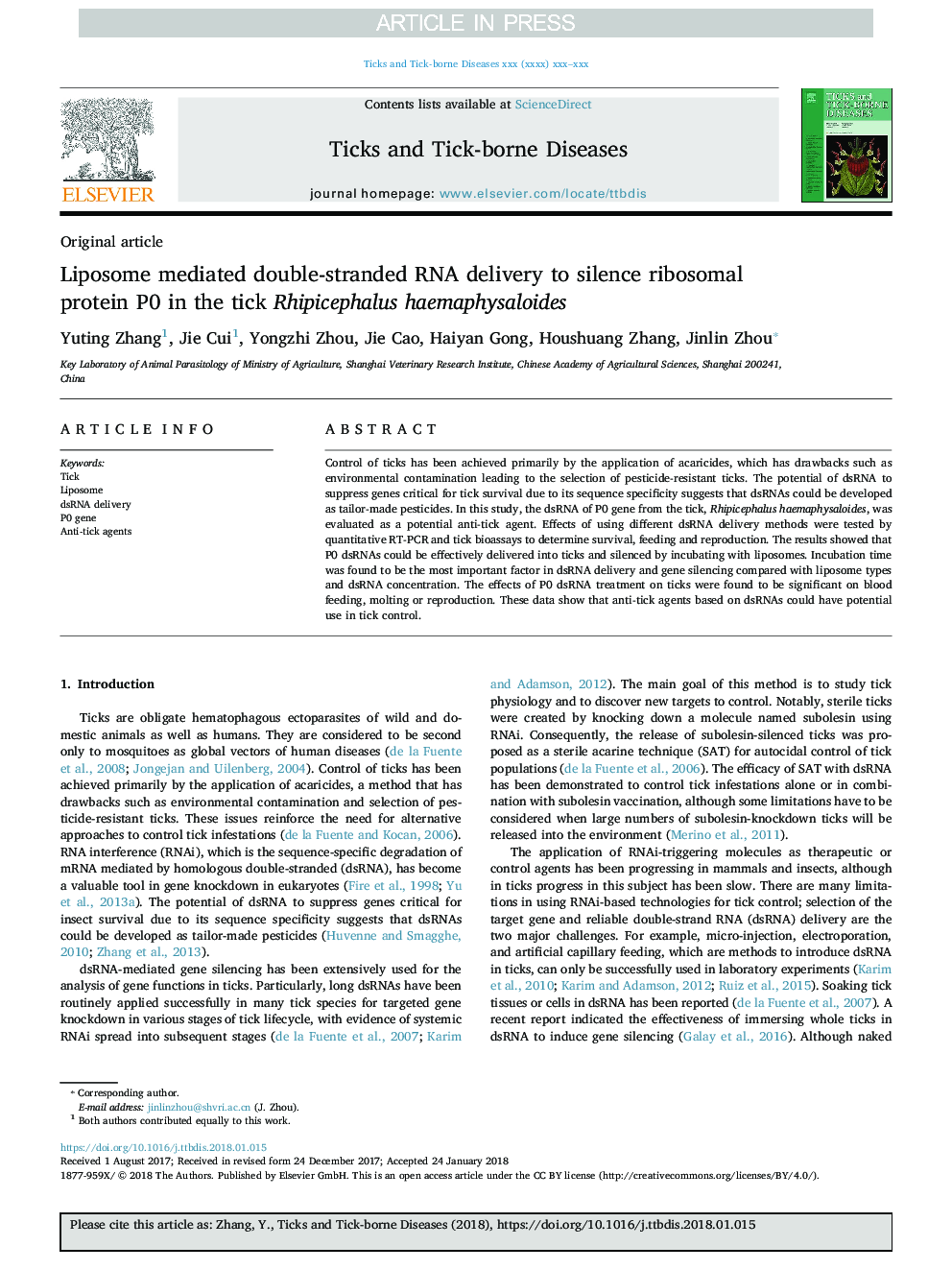| Article ID | Journal | Published Year | Pages | File Type |
|---|---|---|---|---|
| 8507303 | Ticks and Tick-borne Diseases | 2018 | 7 Pages |
Abstract
Control of ticks has been achieved primarily by the application of acaricides, which has drawbacks such as environmental contamination leading to the selection of pesticide-resistant ticks. The potential of dsRNA to suppress genes critical for tick survival due to its sequence specificity suggests that dsRNAs could be developed as tailor-made pesticides. In this study, the dsRNA of P0 gene from the tick, Rhipicephalus haemaphysaloides, was evaluated as a potential anti-tick agent. Effects of using different dsRNA delivery methods were tested by quantitative RT-PCR and tick bioassays to determine survival, feeding and reproduction. The results showed that P0 dsRNAs could be effectively delivered into ticks and silenced by incubating with liposomes. Incubation time was found to be the most important factor in dsRNA delivery and gene silencing compared with liposome types and dsRNA concentration. The effects of P0 dsRNA treatment on ticks were found to be significant on blood feeding, molting or reproduction. These data show that anti-tick agents based on dsRNAs could have potential use in tick control.
Related Topics
Life Sciences
Agricultural and Biological Sciences
Animal Science and Zoology
Authors
Yuting Zhang, Jie Cui, Yongzhi Zhou, Jie Cao, Haiyan Gong, Houshuang Zhang, Jinlin Zhou,
